By C.J. Sturtevant
Originally published in USHPA Pilot, May 2018
It’s mid-March as I write this, and here in the Northwest a lot of us are getting re-acquainted with our hang gliders after a long, soggy winter. That “I hope I remember how to set this thing up!” feeling often takes me back to my very early days in hang gliding, and with both old friends and some brand-new faces on launch, there’s plenty of chatter about how and where and when we first got into the sport. Sadly, many of the places where we old-timers learned to fly, and the instructors we learned with, are no longer part of the hang gliding scene; fortunately, many have endured and continue to be major players in pulling new people in to this marvelous sport. I’d fill an entire magazine with just a list of the names of these still-active “major players” but since I’m only allotted a few pages, I’m narrowing my focus to a small but highly influential segment: hang gliding flight parks. Thanks to Eric (Morningside, New Hampshire), Bruce (Kitty Hawk, North Carolina), Matt (Lookout Mountain, Georgia), Malcolm (Wallaby Ranch, Florida) and Tiki and Bart (Cowboy Up, Texas) for taking time from their busy schedules to provide me with a (slightly biased…) virtual backstage tour of their operations.
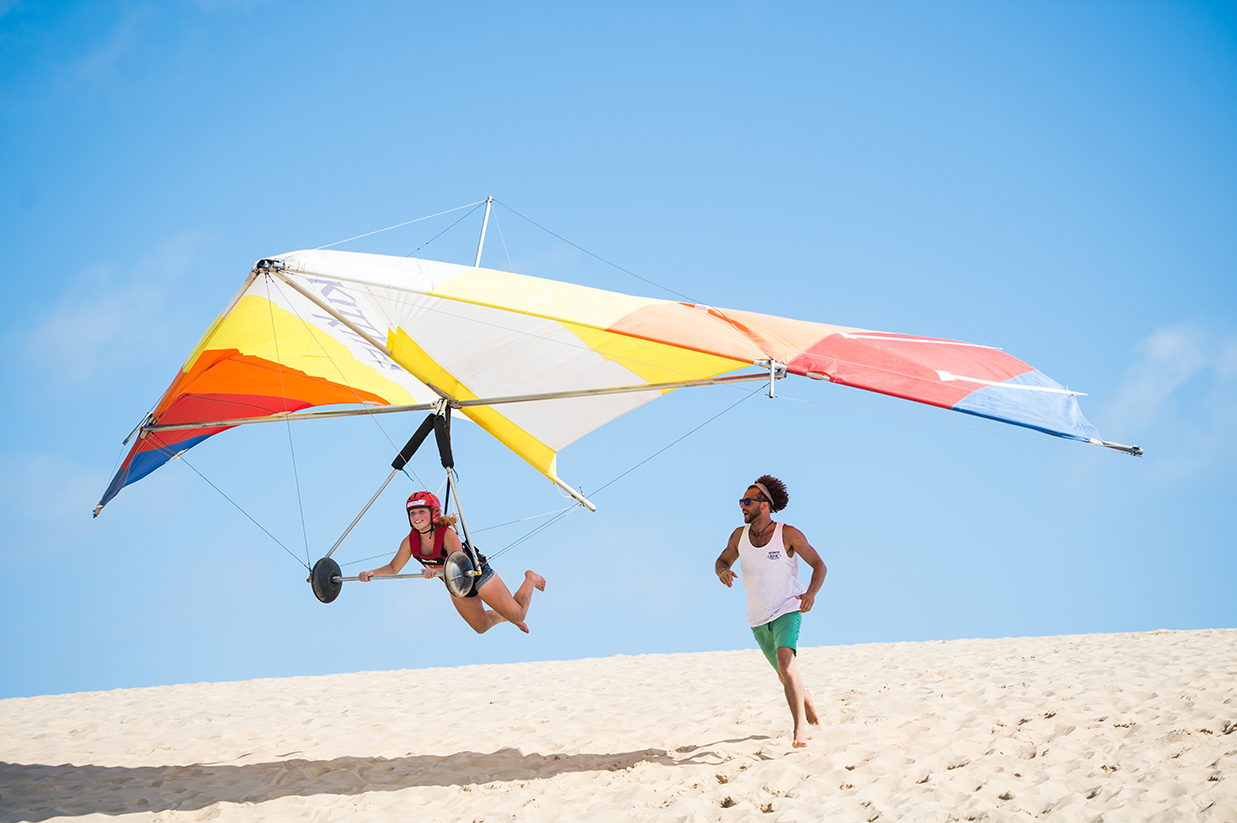 Photo courtesy of Kitty Hawk Kites
Photo courtesy of Kitty Hawk Kites Morningside, Kitty Hawk and Lookout all have roots reaching back to the early days of hang gliding; Wallaby Ranch came into being in the early '90s, and Cowboy Up is a product of the 21st century. Each flight park’s current owner(s) or GM provided the details presented in this article.
On getting started, and keeping going: Morningside, located in Charlestown, New Hampshire, officially became a hang gliding school in 1973 but, says Eric, rumors are that it was a destination for New England’s recreational pilots as early as the late 1960s--that’d be about a half-century ago! For a short time in 2010, after the passing of Morningside’s owner Jeff Nicolay, the park was closed to flying, but it was acquired and reopened by Kitty Hawk Kites in July 2011 and has been in operation ever since.
The Kitty Hawk Kites hang gliding school has been operating in Nags Head, North Carolina, since opening in 1974. Back in the '70s, they offered, for $29, dune lessons that included at least five flights off the ridge and lots of practice ground handling as students muscled their glider back up the dune. The shop sold all the early glider models, and offered a repair service. The school sponsored (and still sponsors) the annual Hang Gliding Spectacular, probably the longest-running hang gliding competition/fly-in--this year’s will be the 46th! They also hosted the first instructor-certification course on the East Coast, and were among the early experimenters with boat, stationary-winch and static-line towing.
Lookout Mountain Flight Park began its commercial operation in 1978. “It was pretty humble,” says Matt Taber--“just a landing field and a wooden outbuilding on top of the mountain. But the location (in Rising Fawn, Georgia), was fantastic, and pilots loved it.” Matt bought into the operation in 1980, designated it as Lookout Mountain Flight Park, and began investing in a long series of improvements and initiatives aimed at growing the sport of hang gliding. Lookout Mountain Flight Park has now been in continuous operation for four decades. “Needless to say,” Matt points out, “it’s grown and changed a lot.” Today, Matt claims, “we’re the largest flight park in America, with integrated foot-launch and aerotow training programs and a highly developed infrastructure.”
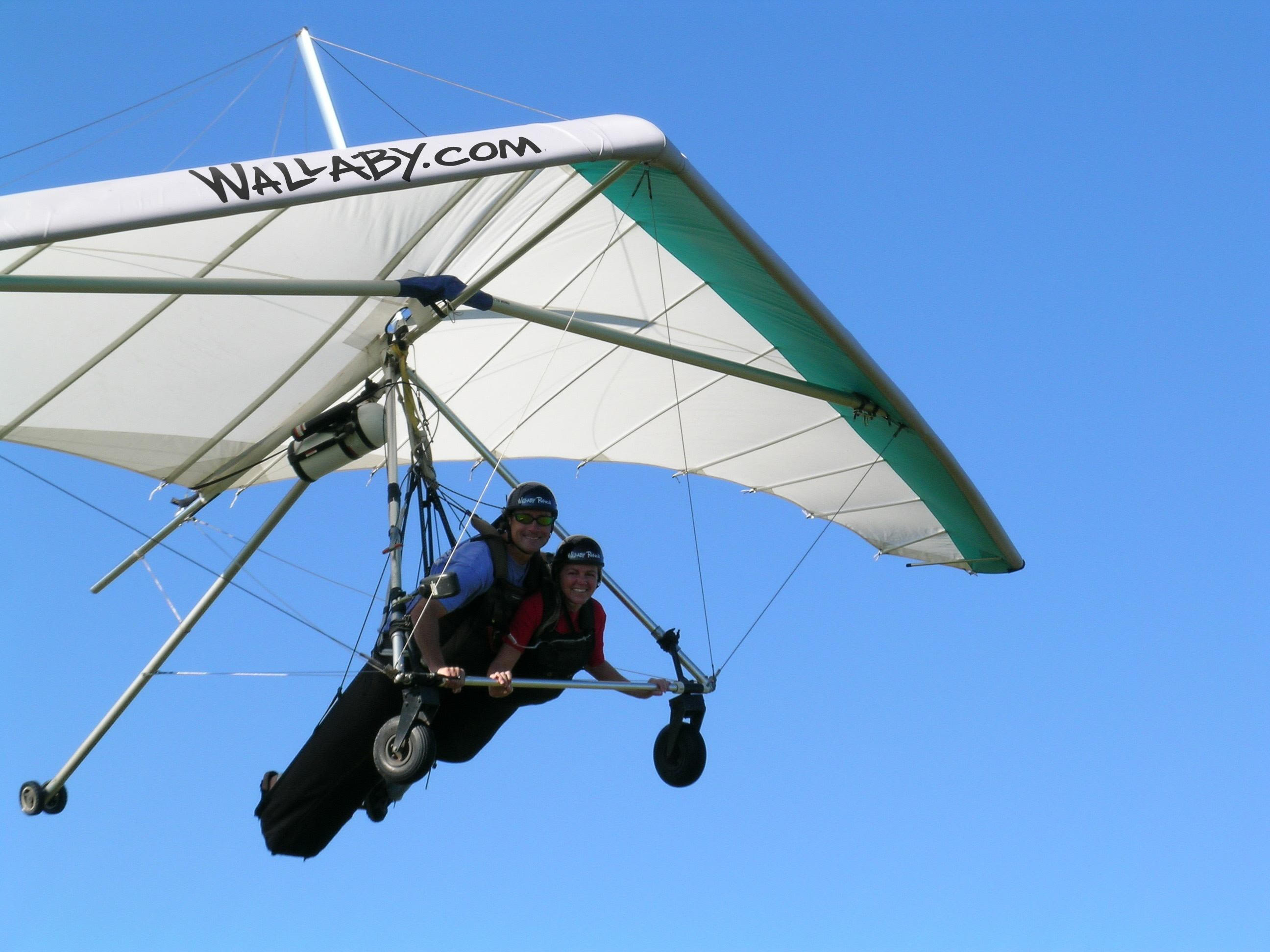 Photo courtesy of Wallaby Ranch
Photo courtesy of Wallaby RanchMalcolm points out that he was the first to have “stepped up to the plate and purchased real estate” to create the Wallaby Ranch, an aerotow-only flight park, back in the very early '90s. The Ranch’s tow pilots have been yanking hang pilots into the air continuously since then. “Over time we’ve learned what works and what doesn’t, what’s better and what’s not quite as good,” Malcolm says, and has modified his operation accordingly.
Tiki Mashy and Bart Weghorst opened Cowboy Up in the spring of 2003 in Jackson, Wyoming, where they provided students and pilots with opportunities for foot launching in the mountains, truck towing and, with the acquisition of a trike, aerotowing. Tiki describes that early operation as “a flight park in a box--no brick-and-mortar, just a trike and a trailer.” Ten years later they expanded to their current location in Wharton (near Houston), Texas. They’ve been in operation continuously (although that meant “seasonally” in Wyoming) and even, Tiki tells me with a touch of pride and a bit of an eye roll, managed to keep both sites in operation simultaneously for a brief period during their transition to the Wharton site.
And now? Morningside is currently a school for hang gliding, paragliding and powered paragliding, and is continuing to branch out into additional “adventure-themed” activities for nonpilots. In addition to aerotow tandem hang gliding, there’s ziplining, kayaking, laser tag, camping, and plans to add more recreational activities soon--things to keep the non-pilot members of a group happily occupied while those with a hunger for flight pursue their dream.
Kitty Hawk still offers many of its original services, with a few up-dates. Students on the dune still get five flights in a lesson (although no longer for just $29), but the instructor now carries the glider back up the hill after each flight, and students can choose from up to five lesson times a day. The Hang Gliding Spectacular still happens every year (this year’s date: May 17-20). The full-service shop is still in operation, although a little less busy than in the early days. Clinics and instructor certification courses still happen regularly. After extensive use of boat and truck towing in the early days, KHK settled on aerotowing in the mid '90s and they now have aerotow locations in Beaufort and The Outer Banks of North Carolina as well as at Morningside Flight Park in New Hampshire.
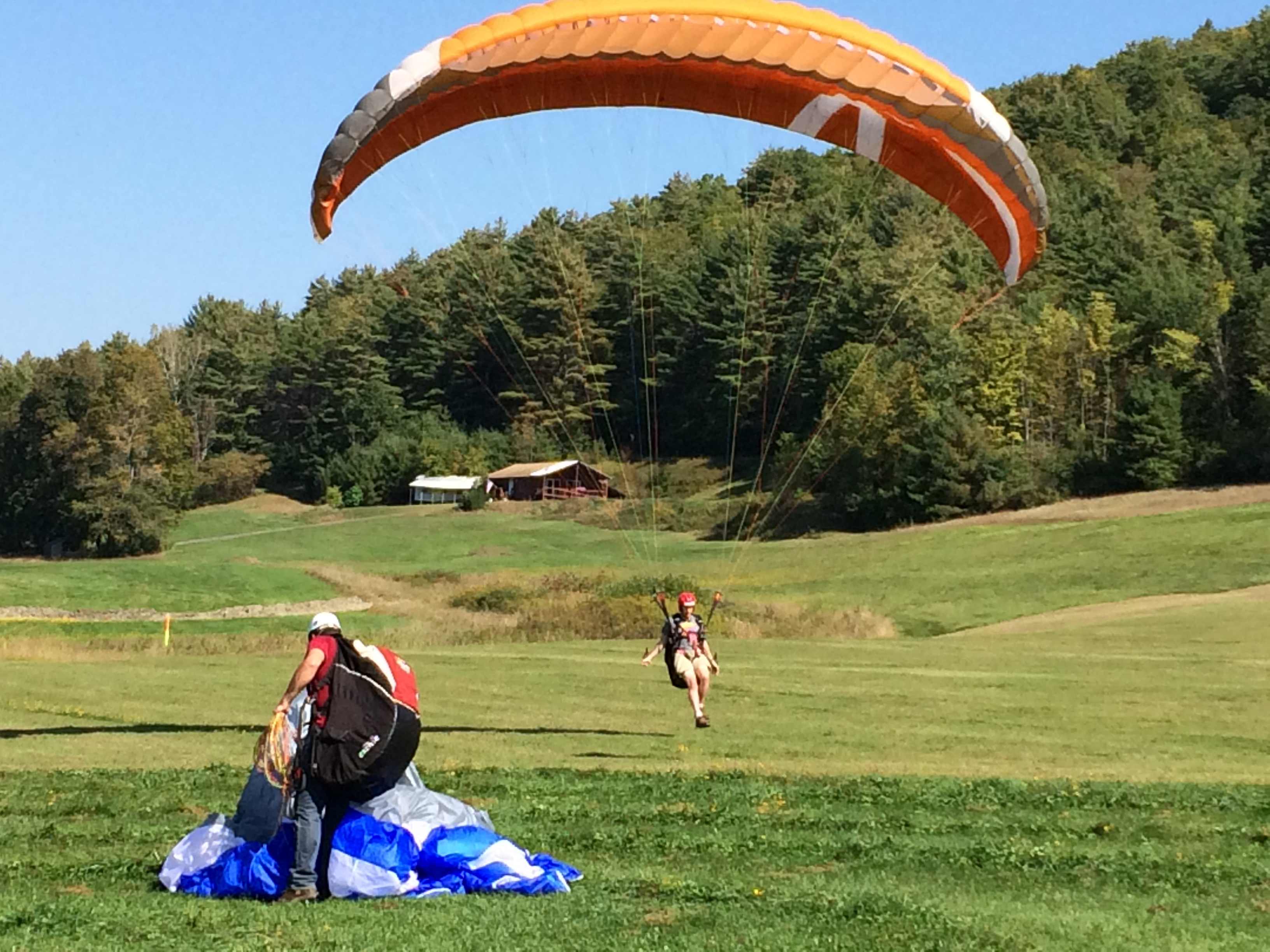 Photo courtesy of Morningside Flight Park
Photo courtesy of Morningside Flight ParkLookout Mountain these days is a popular destination/vacation site for pilots and their families and nonflying friends. Amenities for flyers include just about everything a pilot could wish for: groomed training hills, a custom-built parabolic launch ramp, five aerotow tugs, a pilot clubhouse and bunkhouses, a full-service pro shop, a large glider- and harnessrepair shop, glider-storage units, and a large stock of new and used gliders, harnesses and accessories. Groundbound family and friends can hang out at the campground or the RV park, or for those who “don’t do camping,” there are fully-equipped cabins and luxury rental suites. A swimming pool and a viewing deck provide comfortable venues for keeping an eye on what’s happening in the sky, and Lookout hosts regular social functions for pilots and friends.
When you come to fly at Wallaby Ranch, Malcolm says, you’re going to experience “the ultimate in a friendly, safe but laid-back atmosphere. If you’re looking to learn, you will be immersed in and surrounded by a community and culture of proven and experienced pilots dedicated to an all-round culture of safety. Whether you’re learning from scratch or just getting current with aerotowing, you’re going to fly with the most experienced tandem instructor in the world.”
Cowboy Up offers hang gliding lessons, discovery flights, and pilot clinics in parachute deployment/ repacking, XC flying, landing, instructor training, tandem, aerotowing, and, new this season, scooter towing. Although Cowboy Up does not yet offer vacation/family oriented amenities, “we are a full-service hang gliding park, with three large aircraft hangars,” says Tiki, catering mostly to the Texas pilot population.
One of the biggest obstacles to hang gliding in the US is the loss of sites. I asked these flight-park owners and GMs if they were ever in jeopardy of closing down.
Malcolm of Wallaby Ranch enthusiastically provided a one-word response: “Nope!” The other parks haven’t been quite that fortunate.
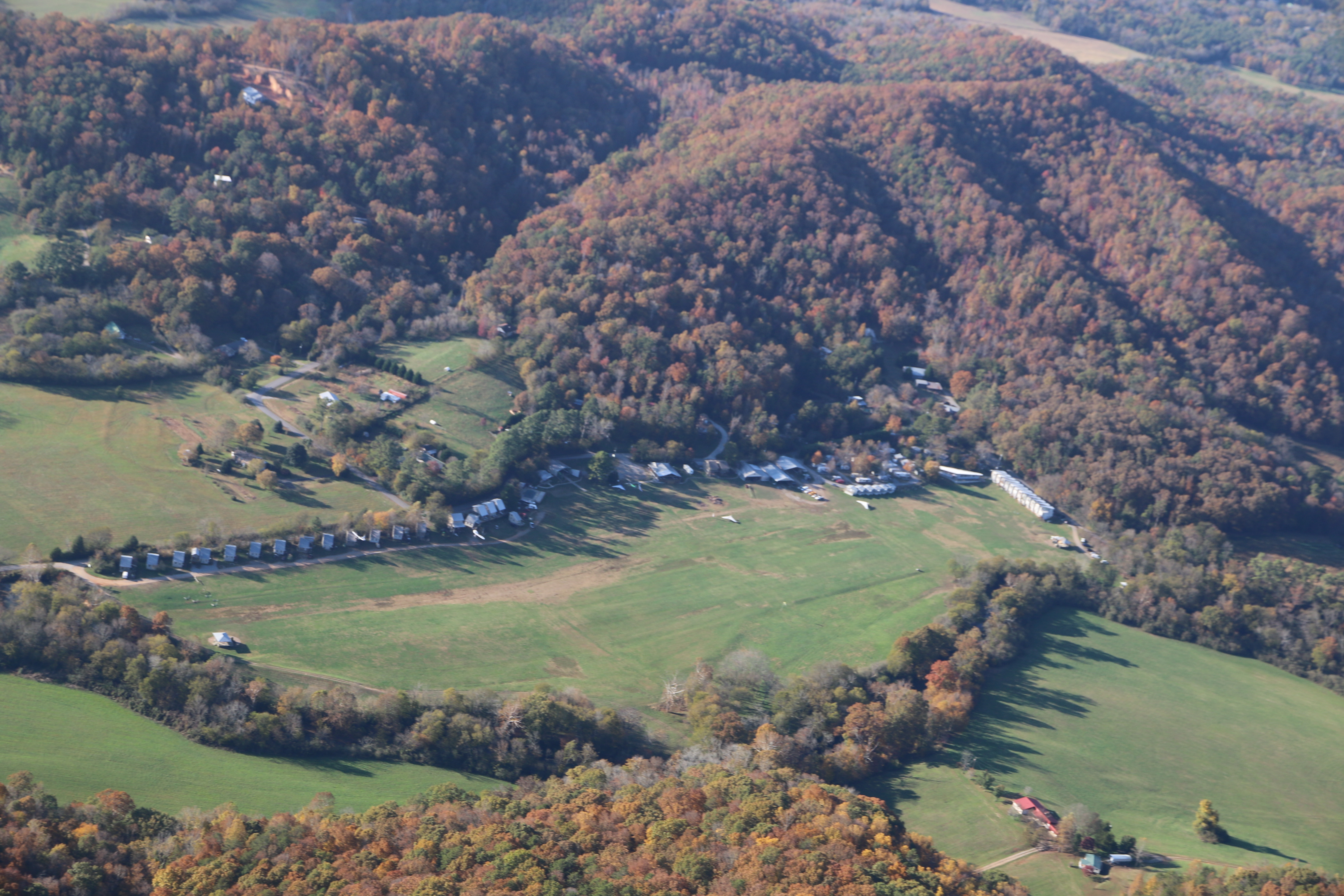 Photo courtesy of Lookout Mountain Flight Park
Photo courtesy of Lookout Mountain Flight ParkEric at Morningside recalls that “there sure have been some threats, but those are much longer stories!” Fortunately, he says, “calmer and wiser heads prevailed in each instance, communities came together and the park has survived many trials. It helps to have an incredible hill and LZ, that many generations of pilots have taken upon themselves to preserve…” Being part of the Kitty Hawk Kites family provides a bit of added site security, and perhaps even more significantly, Morningside’s launches and main LZ are now preserved under the Foundation for Free Flight for 100 years.
Kitty Hawk Kites was teaching on the Nag’s Head dunes before the area became a state park. During the transition to becoming Jockey’s Ridge State Park, there were some questions about whether hang gliding should still be allowed. “The fact that hang gliding was such a draw to the area and had such a solid safety record soon put those fears to rest,” Bruce points out, and instruction continued uninterrupted.
The most significant threat to the Lookout Mountain Flight Park came in 2000, when, says Matt, some local residents got upset about the aerotow operations. “They complained about the noise, and pushed local politicians to shut us down.” In the spirit of good neighborliness, LMFP listened to the complaints, and assured the locals that they would do everything possible to address their concerns. “We went to town-council meetings, spoke with officials, and met directly with landowners,” Matt recalls. “We overhauled our operations and our technology to minimize the noise footprint. Our tow planes were retrofitted with quieter, four-stroke engines and optimized propellers. We also moved our start and shutdown times, and altered our flight patterns to stay farther away from homes.” That approach worked, and the current relationship with the community remains positive.
Cowboy Up also faced some challenges to their operations, and “we were threatened a lot,” Tiki says, although they were never actually forced to stop operations. In Jackson, where they were required to have a special-use permit from USFS, the owner of the adjacent airport tried to shut them down. “FAA came to our rescue,” says Tiki, “and established our site as a designated airport. Problem solved!” And at their current site in Texas, the City of Wharton airport “tried to kick us out--but FAA (again!) and TexDOT came to our rescue,” and Cowboy Up is still going strong.
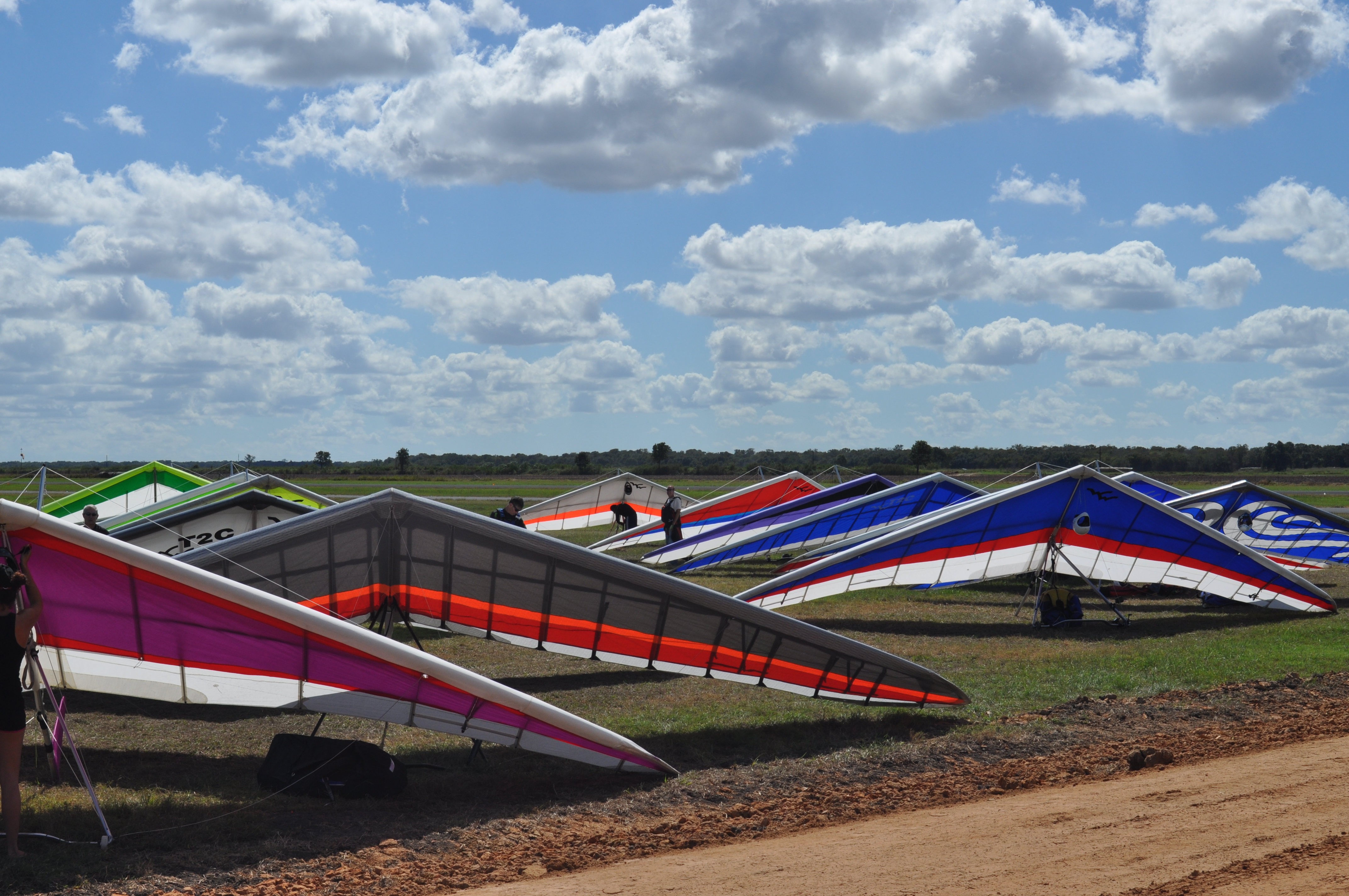 Photo courtesy of Cowboy Up
Photo courtesy of Cowboy UpSo what makes flight parks such a valuable resource for today’s hang pilots? Morningside is a one-of-a-kind in New England, with a near-perfect training hill providing a safe and smooth progression in altitude— students start just a few feet above the large grassy LZ and gradually move up to the top of the hill at 450’. There’s a grass runway for towing. Experienced pilots can use the training hill or towing to learn or refresh advanced skills and techniques. Soaring can happen from either foot or tow launch in the right conditions, and many XC flights in New England begin at Morningside, including some state distance records. For decades, Eric points out, most of New England’s pilots have learned to fly at Morningside, which is located near many of the Northeast’s favorite mountain sites, including Mount Ascutney (less than 10 miles acrossthe river in Vermont). There’s camping on site, and a full-service shop for sales, repair and maintenance of flying gear. And now Morningside is branching out to become a destination for people wanting to learn powered paragliding.
Lookout Mountain Flight Park offers a one-stop solution for both newcomers and seasoned experts. “You can learn to fly here,” says Matt, “then continue on through the highest levels of the sport. We have a large community of active pilots that includes everyone from new H1’s to US National Team pilots. You can take advanced instruction in both foot-launch and aerotow flight, and develop your skills in a supportive community. Over the past two decades, we have graduated an average of more than 100 pilots a year to the mountain launch level. Our staff of professional training-hill and aerotow instructors have a huge depth of experience. We study the sport, and work hard at developing superior training systems, with a focus on core skills, practical knowledge, and safety.”
Kitty Hawk offers the bare necessities of what hang pilots of all levels need and desire: “Our school is open all year,” Bruce points out, “and smooth coastal winds make for ideal flying and training conditions.” KHK’s slogan is “teaching the world to fly since 1974,” and with over 300,000 students passing through their school, it seems a fair claim.
Wallaby’s big draw is their aerotow expertise: “There is no flight park with a longer history of aerotowing,” Malcolm says, but also reminds us that the Florida air is some of the friendliest in the country, and of course there’s all that deep-south sunshine when much of the rest of the country is cold and gloomy.
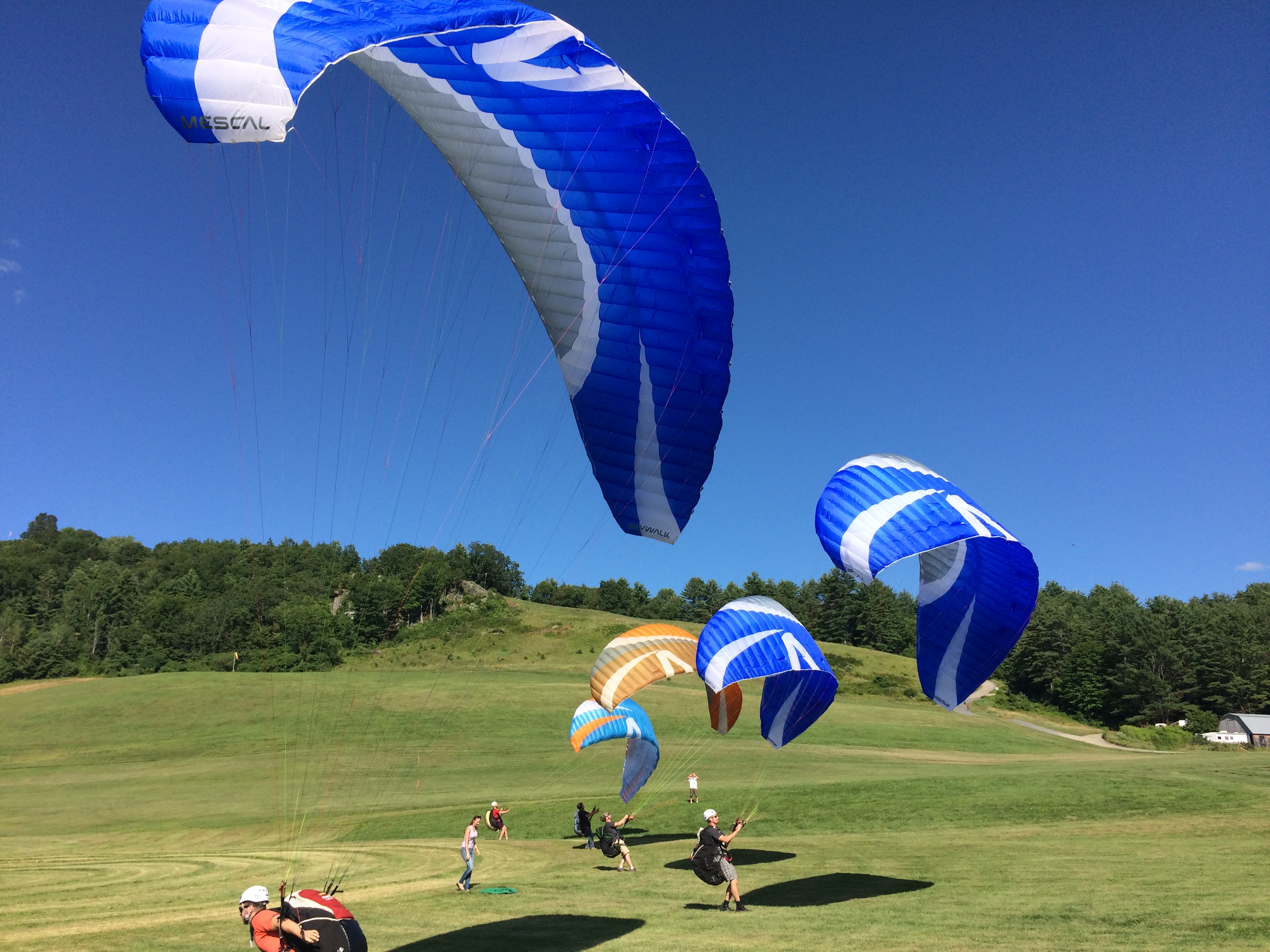 Photo courtesy of Morningside Flight Park
Photo courtesy of Morningside Flight ParkCowboy Up, Tiki justifiably boasts, is “the only full-service, year-round game in town” near Houston, and reiterates that hang pilots can find whatever they need to feed their flying passion, at whatever level they’re at, at Cowboy Up. No resort amenities, though (at least not yet…)
Given the amount of overlap in these parks’ facilities and activities, I wondered why pilots might choose to come to one park rather than another. Not surprisingly, with this encouragement to “toot their own horn,” the owners/GMs gave considerable thought to why hang pilots should patronize THEIR park.
Morningside touts their training hill (“possibly the best training hill the world”) but hedges their bets on the weather (“not always great year-round”). But, for pilots in that northeast corner of the country, just the sight of that long, green slope with its upper ramp launch is “very inviting.” When the wind is too cross for foot launching there’s the aerotow option, providing both solo pilots and nonpilot tandem “bucket-listers” with incredible views of the Connecticut River valley as well as both the Green Mountains in Vermont and the White Mountains in New Hampshire. With recent additions of adventure activities (zip lining, laser tag) and comfy cabins for camping, Morningside has evolved into a vacation destination where families and groups can happily play or relax while those so inclined spend time in the air.
Bruce at Kitty Hawk makes similar claims: “We have the one of the largest training facilities in the US, with great flying conditions and an incredibly knowledgeable staff.” And, he points out, Kitty Hawk can offer something unique: “We are at the beach!”
Matt at Lookout Mountain says, “Pilots come here from around the world. Part of the draw is our facilities: You can check out the latest equipment, have your glider serviced in our maintenance shop, relax by the pool in the landing field. But at the core of it all is our flying site and pilot community: We have a worldclass ridge, and a lot of active pilots. You can catch a ride up or down the mountain, hang out with friends, and live the flying lifestyle. You’re out in green countryside, with hawks soaring the ridge, but you’re only a few minutes from Chattanooga, a city that has been rated as one of the best places in America to live.”
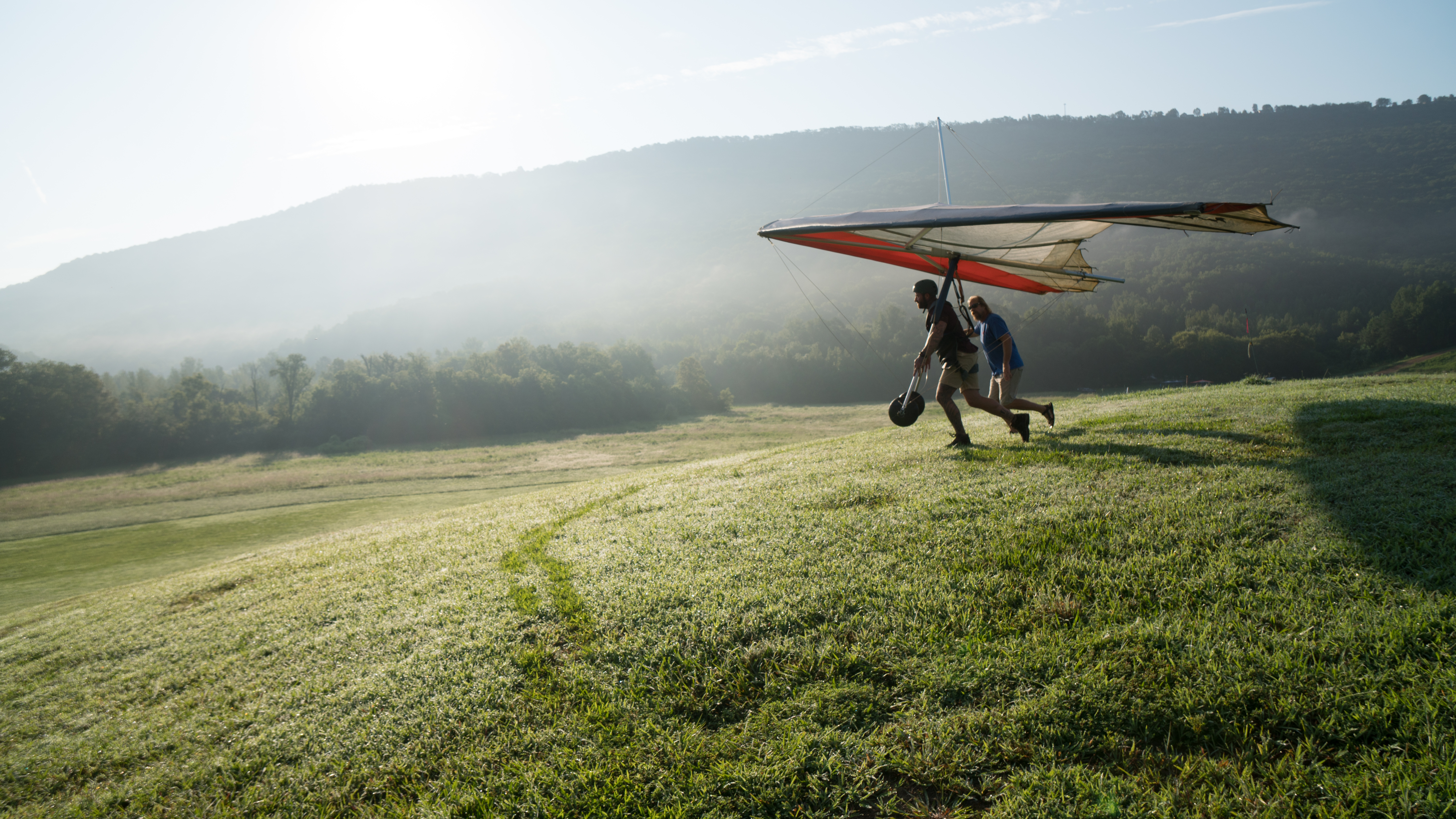 Photo courtesy of Lookout Mountain Flight Park
Photo courtesy of Lookout Mountain Flight Park Malcolm reminds us that, as with any real estate, it’s all about location. “At Wallaby, you’ll take off and land in one of the biggest LZs in hang gliding. If you want to soar, you’re going to be delivered some of the friendliest, most consistent thermaling on the planet. When you’re not flying you can enjoy hundreds of acres of trails and undisturbed Florida, share in gourmet meals served right on site, maybe go for a swim. If you’re a paraglider pilot you could come, spend a week, and leave biwingual. If you bring a friend or spouse or kid, Disney World is right nearby.”
Pilots come to Cowboy Up, says Tiki, not just because they offer quality instruction, but also because they “want to be along for the ride as we continue to build a community that really embraces students. The positive energies generated around the flight park, the lack of complicated rules, the relaxed atmosphere, being away from the city (about an hour south), out in the country surrounded by farm fields, no high rises, no hustle and bustle of city life, unintimidating XC, good lift…” In short, location and community are the icing on the cake at Cowboy Up.
As we’re all aware, the last couple of years have brought about huge changes in USHPA’s insurance situation. Here’s how these flight-park owners and managers, most of whom are currently insured under the RRRG/PASA regulations, explained the changes.
Morningside: “Kitty Hawk Kites insured Morningside when they took over operations. The differences between the old policy and the new one involved mainly documentation and reporting requirements. For the most part, because of Morningside’s long-standing tradition/policies for instruction and progression, most things remained the same as they have been for a long time.”
Kitty Hawk: “We were the first school in the country to have insurance. We’ve been dealing with insurance requirements for years, so the transition to a new insurance model was not difficult. And in fact, the attitude toward insurance has improved since we know that we are now paying into a system that is benefiting our entire organization.”
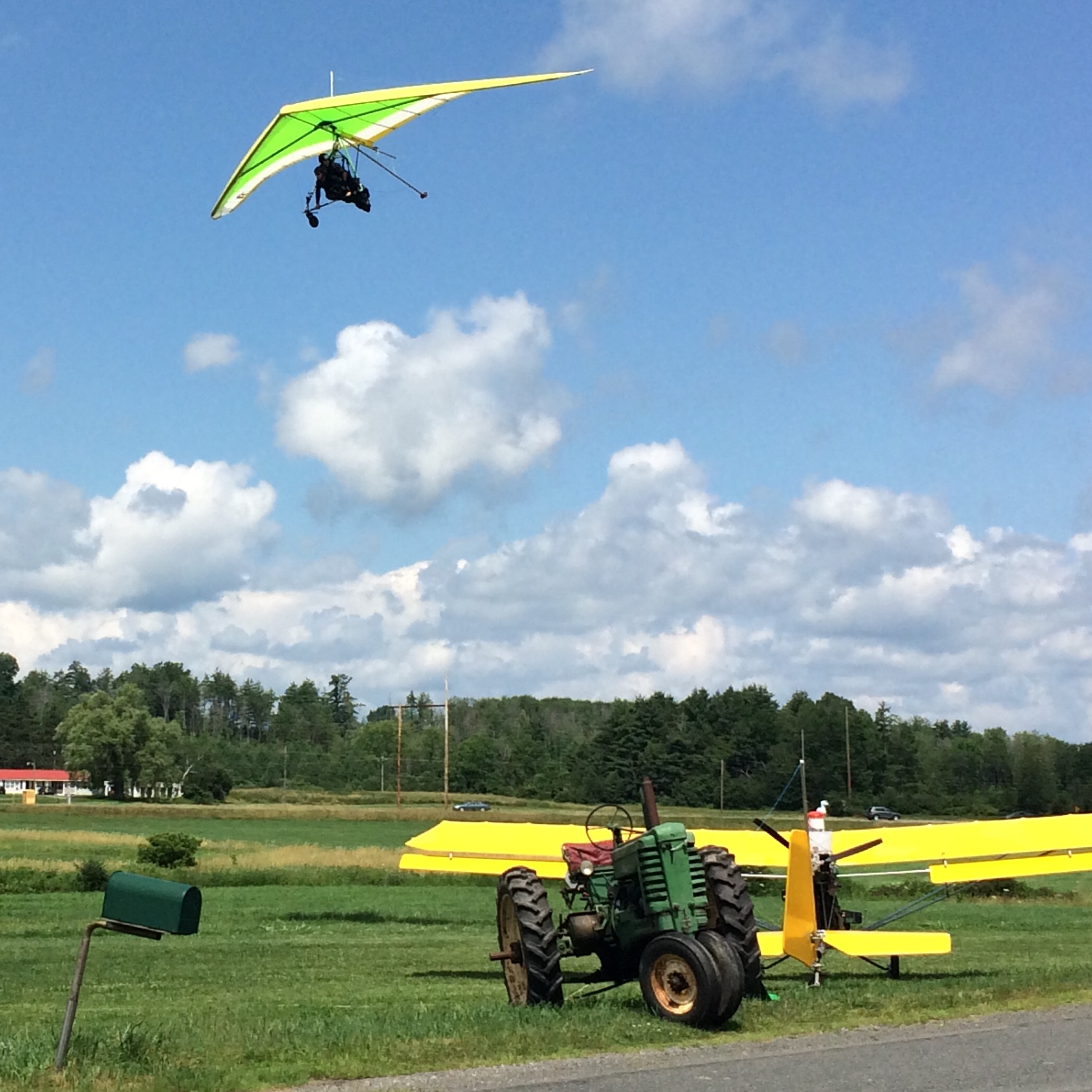 Photo courtesy of Morningside Flight Park
Photo courtesy of Morningside Flight ParkLookout Mountain: “USHPA’s new insurance program has been a double-edged sword. On the upside, it has the potential to open up new markets, such as college outreach programs that will only deal with suppliers who have approved insurance. The downside is that it has increased our costs and added paperwork. The regulatory burden is significant.”
Cowboy Up also describes the new insurance requirements as a double-edged sword. “It has complicated things, because we had to change some of our operational procedures to ‘do more’ (although more is not always better…). But it’s also been good, because it offered insurance that satisfied the airport where we operate.”
Malcolm has a different perspective. “Hundreds of thousands of dollars were committed in the beginning to purchase the property for the Wallaby Ranch so that we wouldn’t be beholden to or a liability burden to others requiring insurance,” he points out, adding, “This was a primary motivating factor in setting up the Ranch, because when we were operating as a club, we were forced to move here and there at the whims and worries of landowners.” Obviously there aren’t many schools or parks--you can probably count the number on one hand and have several fingers left over--that can afford this level of independence when it comes to security in today’s litigious society. So, for those who are still striving for that level of financial and risk-related independence, there’s PASA and the RRRG.
All of these flight parks originally catered solely to hang glider pilots, although over time several have broadened their focus. Here’s how these owners/GMs describe their park’s role in today’s flying scene:
Morningside is probably the most diverse; Eric describes its focus as “biwingual, including powered paragliding, and mostly instructional but also a destination for rated pilots. We attract visitors from all over, especially at the flying contest on Columbus Day weekend, which actually is a big end-of-the-season party. Morningside also promotes an open XC contest for the longest flight from the park every season.”
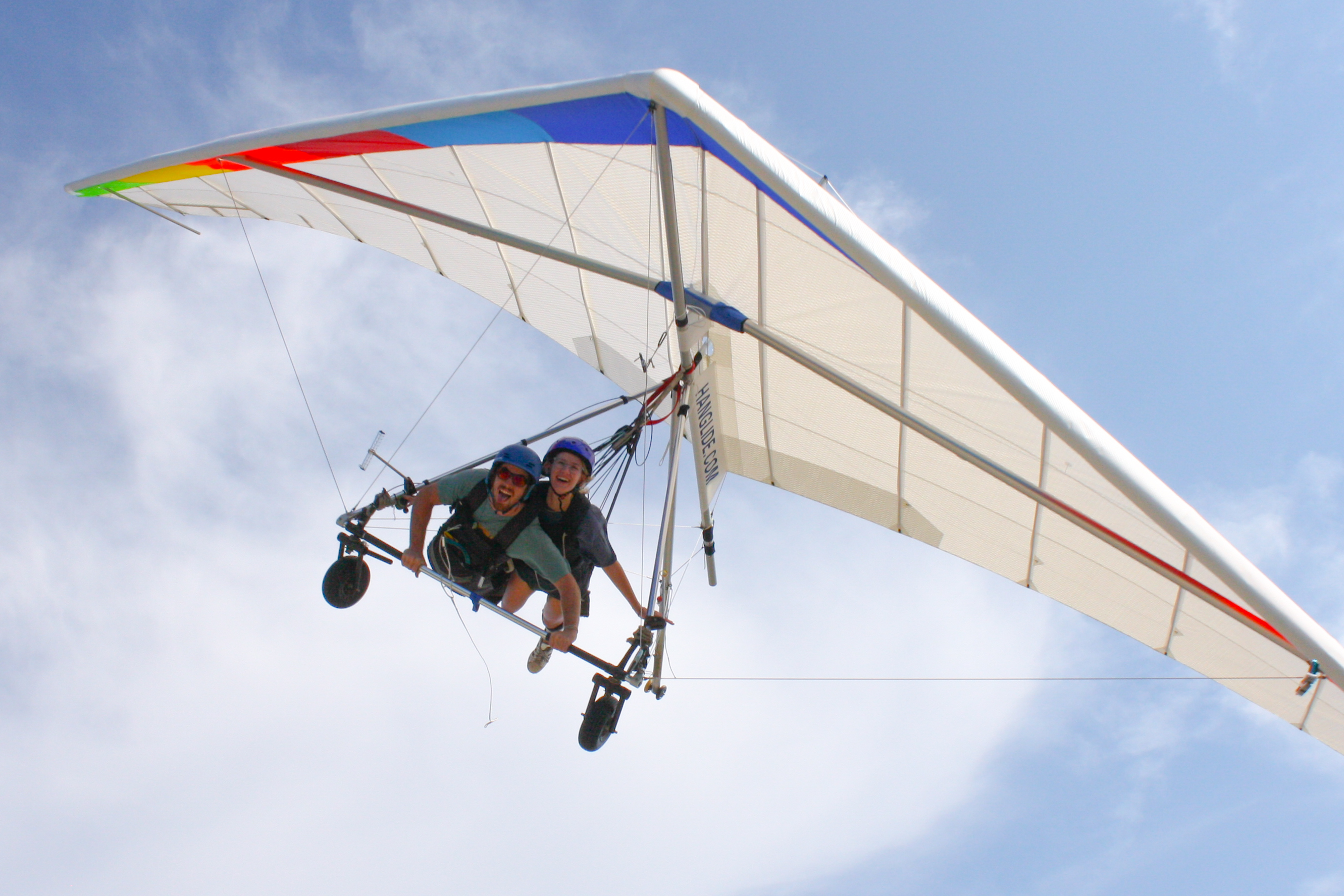 Photo courtesy of Lookout Mountain Flight Park
Photo courtesy of Lookout Mountain Flight ParkKitty Hawk remains true to its origins as “an instructional/recreational/vacation site for hang gliding.”
Lookout Mountain is best known as a hang gliding site, but is becoming increasingly popular with paraglider pilots. “We have a world-class ridge site with great thermals and beautiful scenery--that makes it a destination for pilots from both disciplines. And our facilities make us an ideal destination for a wide range of enthusiasts: We have aerotow and footlaunch training, accommodations, equipment sales and rentals, and complete service facilities. We pride ourselves on being the place that has it all.”
Wallaby has been from the start, and remains, “a hang gliding site, committed mainly to the safest, highest quality instruction possible. Whether you’re learning from scratch or just getting current with aerotowing, you’re going to fly with the most experienced tandem instructor in the world.”
Cowboy Up is also solely a hang gliding site, offering mainly instruction, recreational flying, and “discovery” flights.
Finally, I asked these guys and gals to dream big: If the flight-park fairy godmother offered to grant three wishes related to their operation, what would they ask for?
Eric at Morningside: Great weather, and west winds 5-15mph every day. If we had those, even just three or four times a week, I believe everything else we could wish for would eventually be there, too.
Bruce at Kitty Hawk: More pilots; more students; perfect training conditions every morning, and soarable conditions every afternoon.
Matt at Lookout Mountain: Make more people interested in learning to fly hang gliders. Give us perfect weather for both students and experts by starting the wind each day at noon, making it blow from the northwest at 8-12mph, and mixing in plenty of smooth thermals. Eliminate the down season!
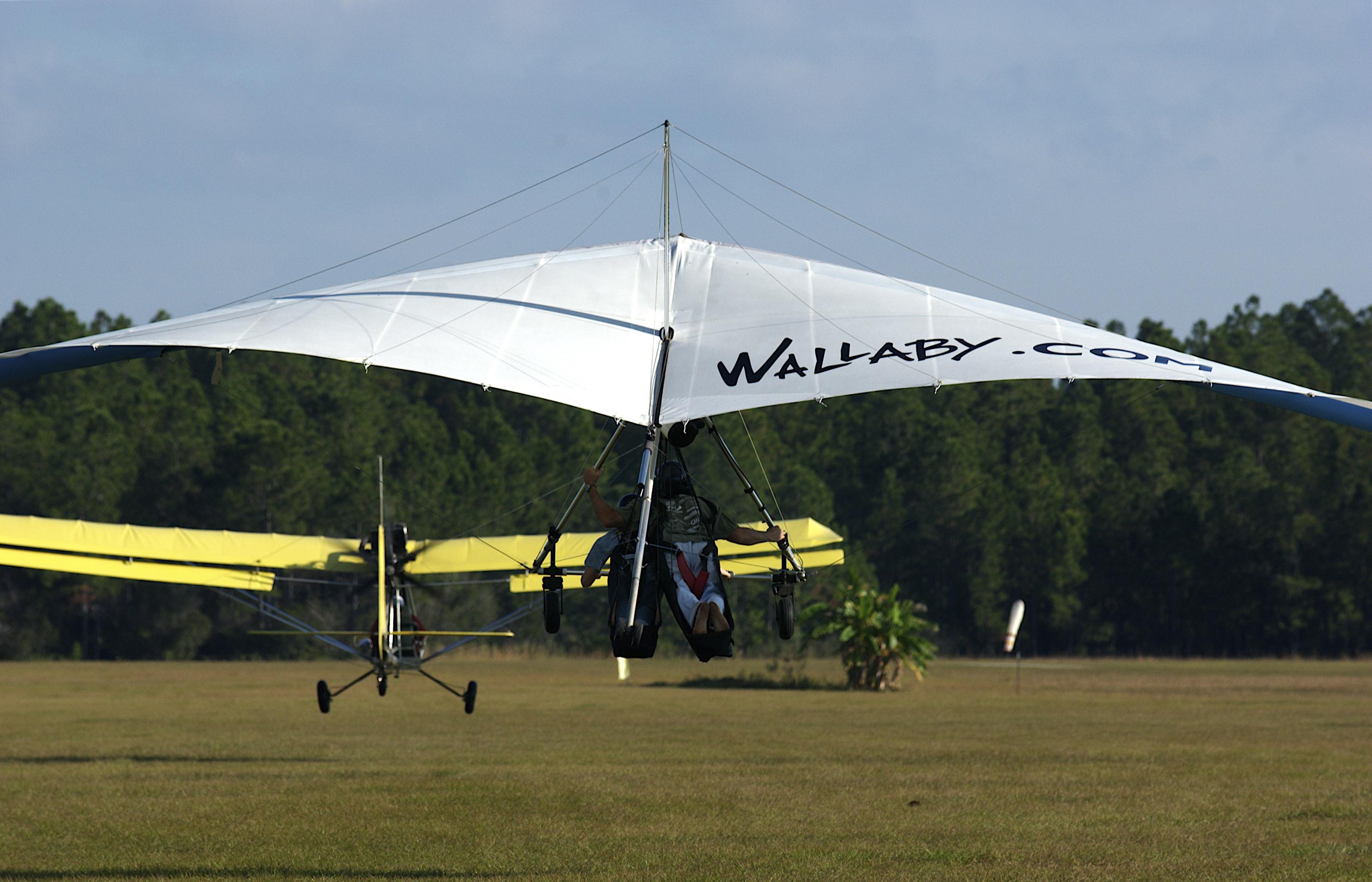 Photo courtesy of Wallaby Ranch
Photo courtesy of Wallaby Ranch Malcolm at Wallaby: Pleasant and soarable weather every day of the year. Grass that stayed thick and green and never needed mowing. The opportunity to continue turning people on to the coolest form of flight--forever.
Tiki and Bart at Cowboy Up: Our own piece of land to build a flight park that’s not sitting on an airport. Fewer restrictions on becoming an instructor. A big--make that HUGE!--clubhouse and lots of outbuildings (hangars, etc.) on that land.
So there you have it: a not-exactly-unbiased peek into the philosophies and facilities of these five flight parks that are deeply invested in bringing new hang glider pilots into the fold, and providing a venue and services to keep our experienced pilots engaged, challenged, always advancing. If you’re looking to add something or someplace new to your flying experience, any one of these flight parks would be an excellent place to start.